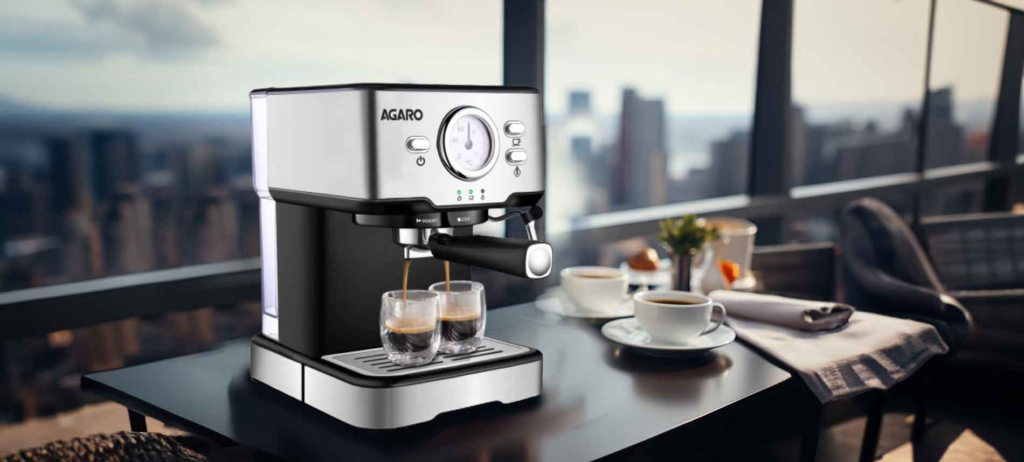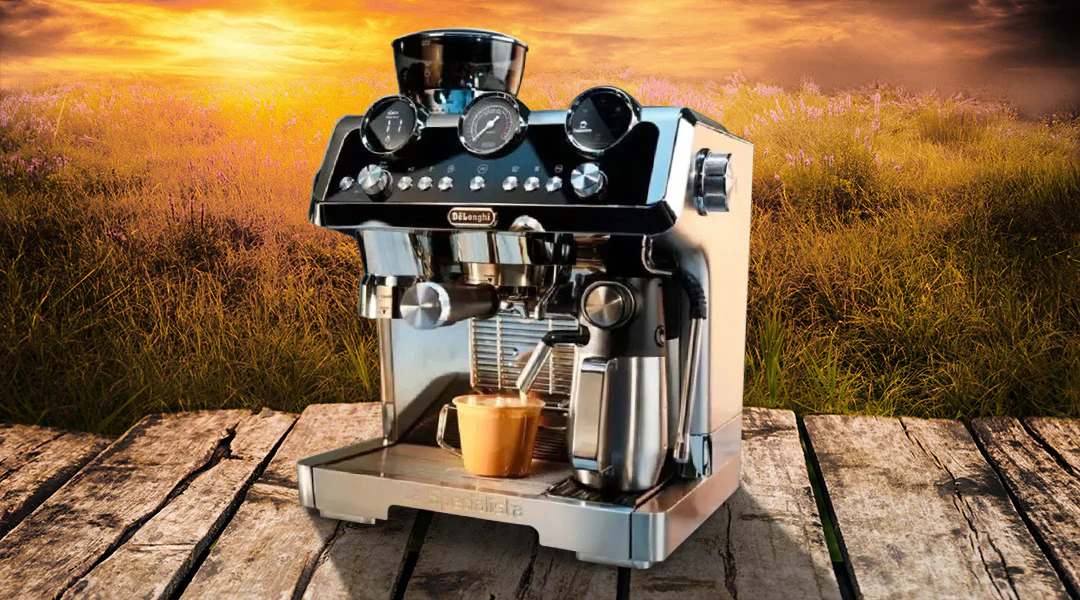In the world of coffee aficionados, the Espresso Machine stands as a revered icon—a portal to the rich, complex flavors that define the perfect shot of espresso. Beyond its mere functionality, an espresso machine embodies an artful fusion of engineering precision and sensory pleasure. Let’s embark on a journey to uncover the essence of these remarkable appliances, exploring their history, inner workings, and enduring allure.
The Origin Story
The story of espresso begins in 19th-century Italy, where the quest. For a concentrated, potent brew led to the birth of the espresso machine. The first patent for such a device was filed by Angelo Moriondo in 1884, laying the groundwork for a revolution in coffee culture. Over the decades, innovations by luminaries like Luigi Bezzera. And Achille Gaggia refined the technology, paving the way for the modern espresso machine we know today.
Engineering Marvels
At the heart of every espresso machine lies a symphony of components working in harmony to extract the essence of coffee beans. From the boiler, which heats water to precisely controlled temperatures, to the portafilter, where finely ground coffee. Is tamped and brewed under pressure, each part plays a crucial role in crafting the perfect shot. Whether it’s a traditional lever machine or a state-of-the-art automatic model. The engineering behind espresso machines is a testament to human ingenuity and craftsmanship.
The Pursuit of Perfection
For baristas and home enthusiasts alike, pulling the perfect shot of espresso is both a science and an art. It requires not only technical expertise but also an intuitive. Understanding of variables like grind size, tamping pressure, and extraction time. Mastery of these elements allows one to unlock a spectrum of flavors—from bright and acidic. To rich and chocolaty—in a single ounce of liquid. In this pursuit of perfection, the espresso machine serves as both tool and muse, inviting exploration and experimentation with every brew.

Beyond the Shot
While the espresso machine is synonymous with its eponymous beverage, its versatility extends far beyond espresso alone. With the addition of steaming wands and milk frothers, it becomes a canvas for crafting an array of espresso-based drinks. From velvety cappuccinos to decadent lattes. Moreover, modern innovations such as programmable settings and integrated grinders have democratized the art of espresso-making, empowering. Enthusiasts of all levels to elevate their coffee experience at home.
Cultivating Community
Beyond its technical marvels and culinary delights, the espresso machine fosters a sense of community among coffee lovers worldwide. Whether it’s the convivial atmosphere of a bustling café or the intimacy of a home kitchen, the ritual of brewing. And sharing espresso transcends cultural boundaries, bringing people together in appreciation of a shared passion. In this sense, the espresso machine is more than just a kitchen appliance—it’s a catalyst for connection and camaraderie.
Conclusion
In the tapestry of coffee culture, the espresso machine occupies a central place, weaving together history, technology, and sensory delight. Into a single, transcendent experience. From its humble origins in 19th-century Italy to its global ubiquity today, the espresso machine. Continues to captivate and inspire generations of coffee enthusiasts around the world. So whether you’re a seasoned barista or an aspiring home brewer. Let the espresso machine be your guide on a journey of discovery and delight—one shot at a time.
Common FAQs
How does an espresso machine work?
Espresso machines work by forcing hot water through finely-ground coffee under high pressure, extracting the flavors and oils from the coffee grounds to create a concentrated shot of espresso.
What types of espresso machines are there?
There are several types of espresso machines, including manual (lever-operated), semi-automatic, automatic, and super-automatic machines. Each type offers varying degrees of control and automation over the brewing process.
What factors affect the quality of espresso?
The quality of espresso is influenced by factors such as the freshness and quality of the coffee beans. The grind size of the coffee, water temperature and pressure, and the consistency of tamping the coffee grounds in the portafilter.
How do I maintain and clean my espresso machine?
Regular maintenance and cleaning are essential for prolonging the lifespan of your espresso machine and ensuring optimal performance. This includes tasks such as descaling to remove mineral deposits, cleaning the portafilter and group head, and replacing worn-out parts as needed.
What is the difference between a single boiler and a double boiler espresso machine?
Single boiler machines have one boiler for both brewing espresso and steaming milk, which can lead to temperature fluctuations between brewing and steaming. Double boiler machines have separate boilers for brewing and steaming, allowing for more consistent temperature control.
How do I choose the right espresso machine for my needs?
When choosing an espresso machine, consider factors such as your budget, level of experience, desired features (e.g., steam wand, built-in grinder), and how often you plan to use the machine. It’s also helpful to read reviews and seek recommendations from other coffee enthusiasts.
Can I use regular coffee beans in an espresso machine?
While espresso machines are designed to brew espresso using finely-ground coffee beans, you can technically use regular coffee beans in some machines. However, for best results, it’s recommended to use espresso-specific beans that are roasted and ground to the appropriate fineness.
What accessories do I need for making espresso at home?
Essential accessories for making espresso at home include a quality grinder for freshly-ground coffee, a tamper for evenly compressing the coffee grounds, a frothing pitcher for steaming milk, and a knock box for disposing of used coffee grounds.
How long does it take to learn how to use an espresso machine?
Learning to use an machine effectively can take time and practice, especially if you’re new to espresso-making. However, with patience, experimentation, and a willingness to learn, you can quickly. Improve your skills and master the art of pulling the perfect shot.
Can I make other drinks besides espresso with an espresso machine?
Yes, espresso machines can be used to make a variety of drinks beyond espresso, including cappuccinos, lattes, macchiatos, Americanos, and more. By combining espresso shots with steamed milk or hot water, you can create customized beverages to suit your taste preferences.

















[…] June 24, 2024 Admin 0 […]
[…] July 19, 2024July 19, 2024 […]